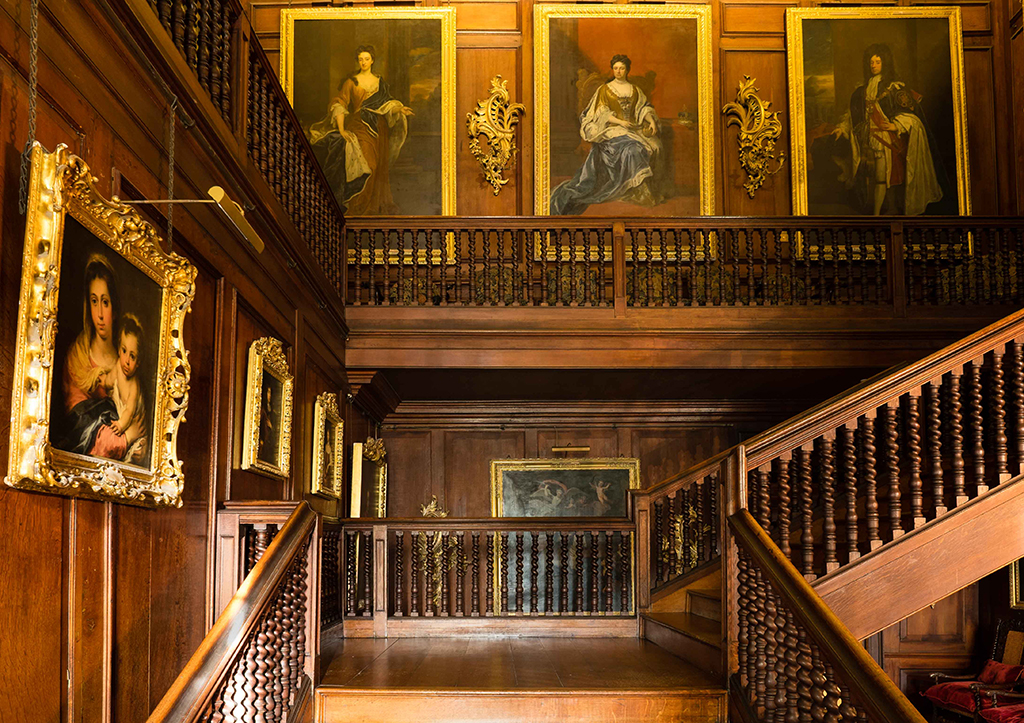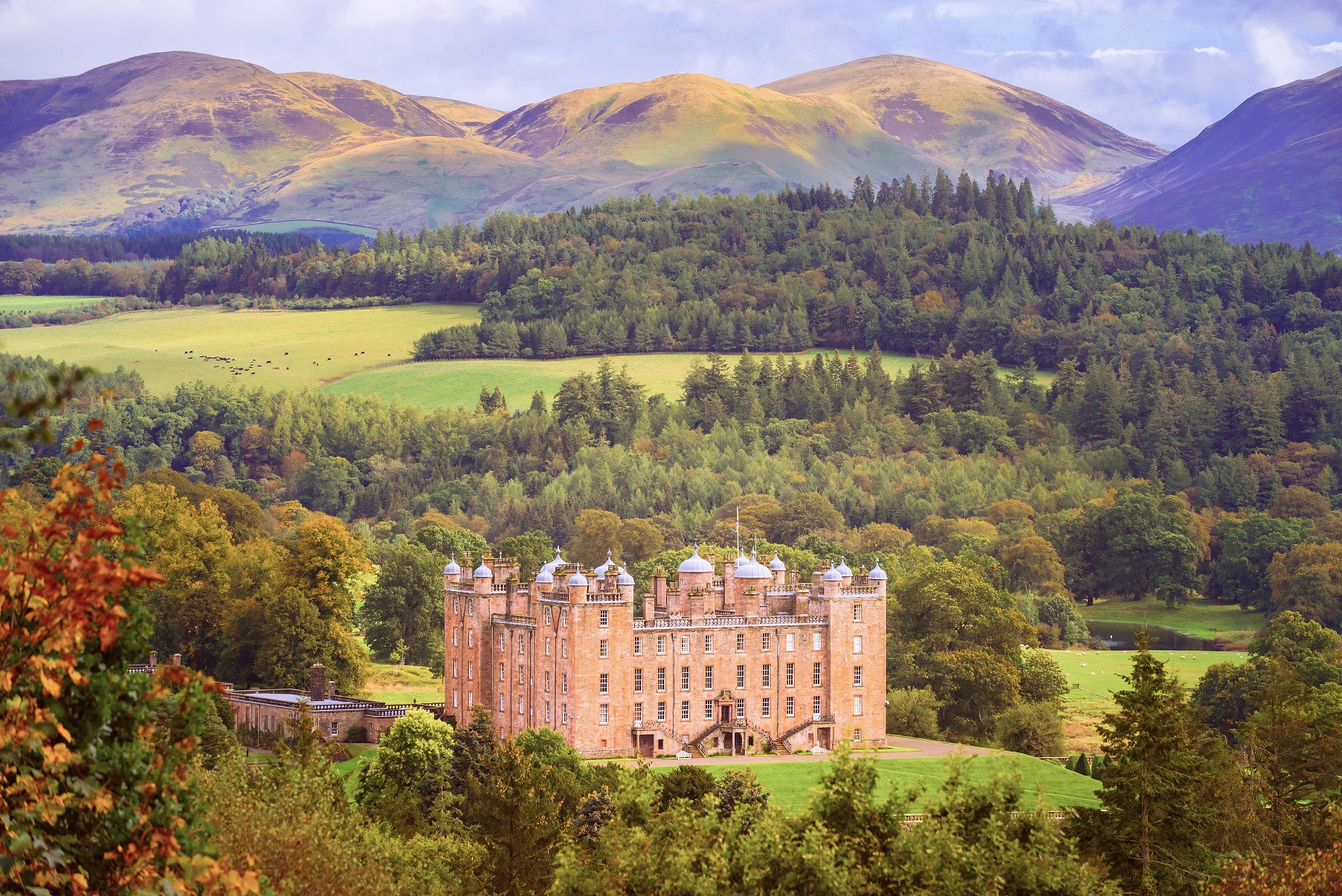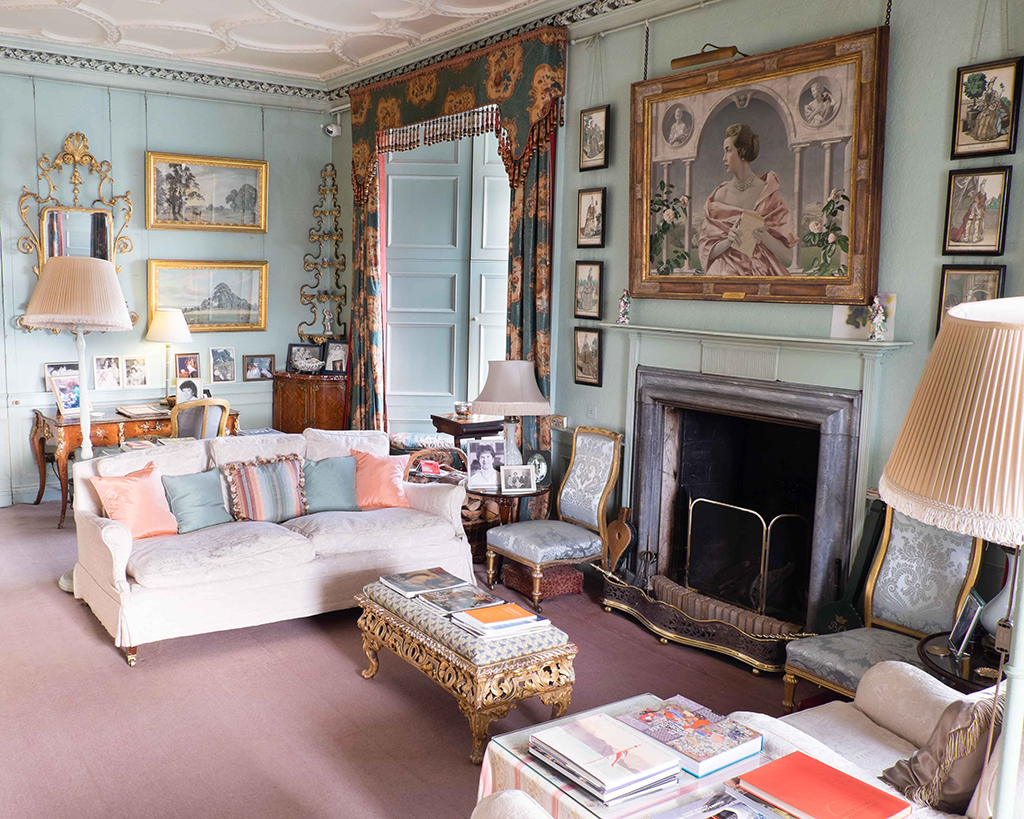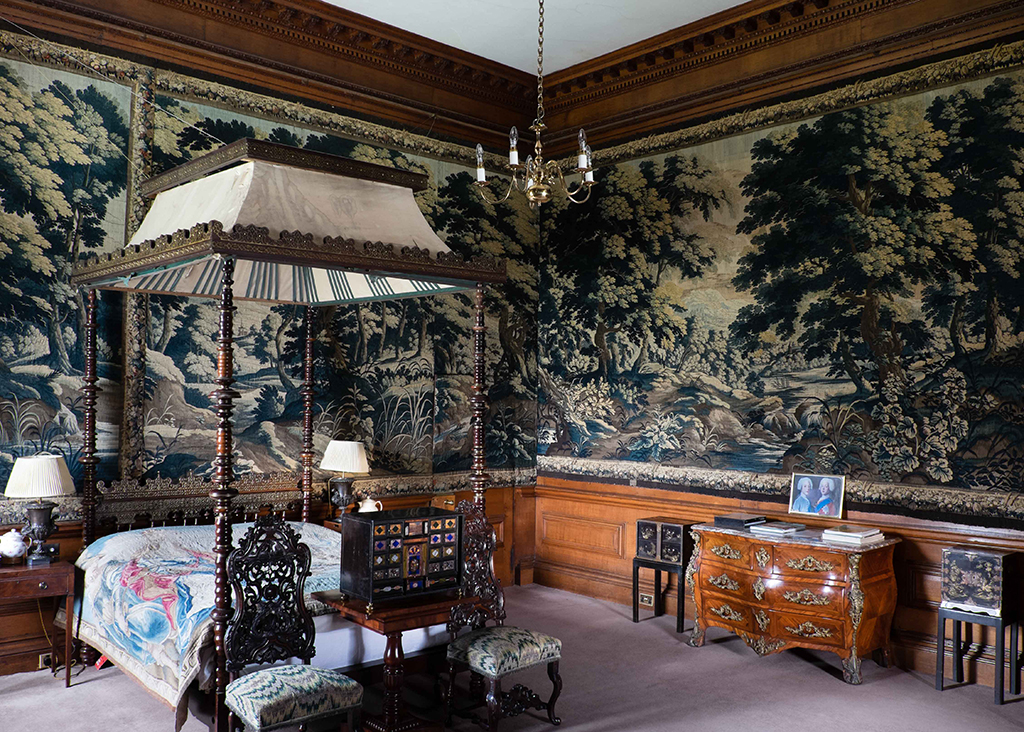From Robert the Bruce to Bonnie Prince Charlie, Drumlanrig Castle has witnessed some of the most significant events in Scottish history.
‘A palace so glorious, gardens so fine, and everything so truly magnificent, and all in a wild, mountainous country…’ so wrote Daniel Defoe on his Scottish sojourn in 1720. As dawn breaks, light and mist swirl around the south side of Scotland’s pink palace.
Built around a courtyard and nestling in the wooded Nith valley, Drumlanrig is perhaps more French chateau than Scottish castle. In Dumfriesshire, its classically carved sandstone walls and elegant horseshoe-shaped staircase are a monument to style and grace.
Yet Drumlanrig comes with a taste of danger. A Douglas stronghold, it was built with the clan motto, Forward Braveheart!, very much in mind and the winged hearts of the family crest are in evidence inside and outside the castle. They are carved into stone and grace lead gutters. They adorn plaster ceilings and decorate plush carpets. And they are dug into ornate garden beds. High and low, it is a romantic theme, but it is one that recalls a turbulent past.

Drumlanrig stands on a low hill (drum) at the end of long (lang) ridge (rig) within land given to the Douglas’ by Robert the Bruce. In 1329 Bruce died and his friend Sir James (the Black Douglas) was tasked with taking his heart to the Holy Land. The intrepid knight set off, carrying the precious heart in a silver casket. The crusade ended in Spain where Douglas paused to do battle with the Moors.
Fatally wounded, he is said to have thrown the casket towards the enemy, shouting ‘forward brave heart!’ Almost all of Sir James’ contingent were killed, but somehow the casket containing the Bruce’s heart found its way back to Melrose Abbey.
In 1679, a more modern Douglas decided to build himself a castle on lands north of Dumfries. As a Lord of the Treasury and Lord High Commissioner, one might think that the 1st Duke of Queensberry would have had a handle on money. But it seems His Grace was not so careful in managing this ambitious building project.
Drumlanrig took a decade to build, with the king’s master mason Robert Mylne employed for the task. He was ably assisted by Dutch stone carvers Peter Boyse and Cornelis van Nerven.

The castle was built, not for defence, but for display in the same manner as French chateaux, which influenced Scottish architecture and the creation of other great houses of the time. The cost was enormous, even for a duke.
William Douglas was so horrified by the expense that he is said to have only ever spent one night there.
‘May the devil poke out the eyes of any who looks in here,’ he exclaimed after examining the final building accounts. His son, the ‘Union Duke’, was not so dispirited, adding the great oak staircase complete with hidden door. The gardens were designed in the 1730s and 40s, by the 3rd Duke and his wife Catherine or Kitty Hyde.
Today, the 10th Duke and Duchess of Buccleuch and 12th of Queensberry, whose family name is Montagu Douglas Scott, live part of each year at their pink palace in the Dumfriesshire hills. It is one of several stately homes they own. Others include Bowhill (Scott), in the Scottish Borders, and Boughton (Montagu) in southern England.
For much of the year, Drumlanrig’s treasures can be appreciated by others, too. The castle is open to the public and the journey down a mile-long drive takes the visitor into a treasure trove of furniture and art. Portraits of British kings and queens abound, most notably the Stewart kings James VI and Charles II.

Renaissance and post-restoration paintings line the walls; a Rembrandt and a Holbein sit alongside the royal portraits. A Reynolds and a van Dyck vie for prominence beside a portrait of Monmouth, Charles II’s illegitimate son. Finely worked tapestries line the walls of the front hall. It is said they were embroidered in part by Mary Queen of Scots while she was being held a prisoner elsewhere in Scotland.
These mix neatly with works by the post-war society portraitist Philip de Laszlo, who painted the Countess of Dalkeith in 1932. The present Duke’s mother, Jane Macneil, was painted by John Merton in 1957.
Furniture and artefacts from the 16th and 17th centuries form a large part of the contents of the castle. Two exquisite French cabinets in the drawing room, by seventeenth century master André-Charles Boulle, are inlaid in contre partie marquetry and supported by figures of Omphale, Queen of Lydia, and Hercules.

Like other great houses in Scotland, Drumlanrig was visited by Prince Charles Edward Stuart during his campaign to regain the British throne. He stayed in 1745, uninvited, on his withdrawal north in the face of the Hanoverian advance. He left a small oil painting of himself as a calling card. Other artefacts on display include his money box, which he left behind, rings and a bivouac kettle.
This great castle, decorated with winged hearts, sits proudly amongst the hills around Thornhill, as a testament to the Douglas family.
Whatever the French influence, it is ultimately a Douglas sanctuary, standing as a memorial to the magnificent expedition to the Holy Land, to lay to rest King Robert the Bruce’s heart.
TAGS

